- 218B Pasteur, Vo Thi Sau Ward, District 3, HCMC
- hello@vcvaa.edu.vn
- +84 28 7109 6959
Connect:
Children enter this world with a desire to draw, or they inherently possess artistic potential within them. By nature, children from kindergarten to third grade have an intrinsic motivation that drives them to continuously explore, experiment, and question the things they see in real life. We have all witnessed the art created by children without any guidance from adults. Children begin by making basic marks and then proceed to draw simple symbols (geometric schemata). Some continue to express artistic realism. For most children, this natural progression in visual expression occurs sequentially. The questions then arise: “How can teachers and parents guide children to enhance and develop their inner artistic potential? What kind of art can children learn through instruction?” In the past, providing children with art supplies and encouraging them to create was considered sufficient. However, contemporary art educators believe that guidance in both the creative process and the evaluation of art is crucial.
This is exemplified by Tom Anderson, who stated:
“Artistic expression and the evaluation of artwork should be taught in close correlation with each other; learners will gain a deeper understanding of both processes when they are related. Moreover, knowing how to seize opportunities for one activity to naturally lead into another will create a sense of connection for children between creating and appreciating art.”
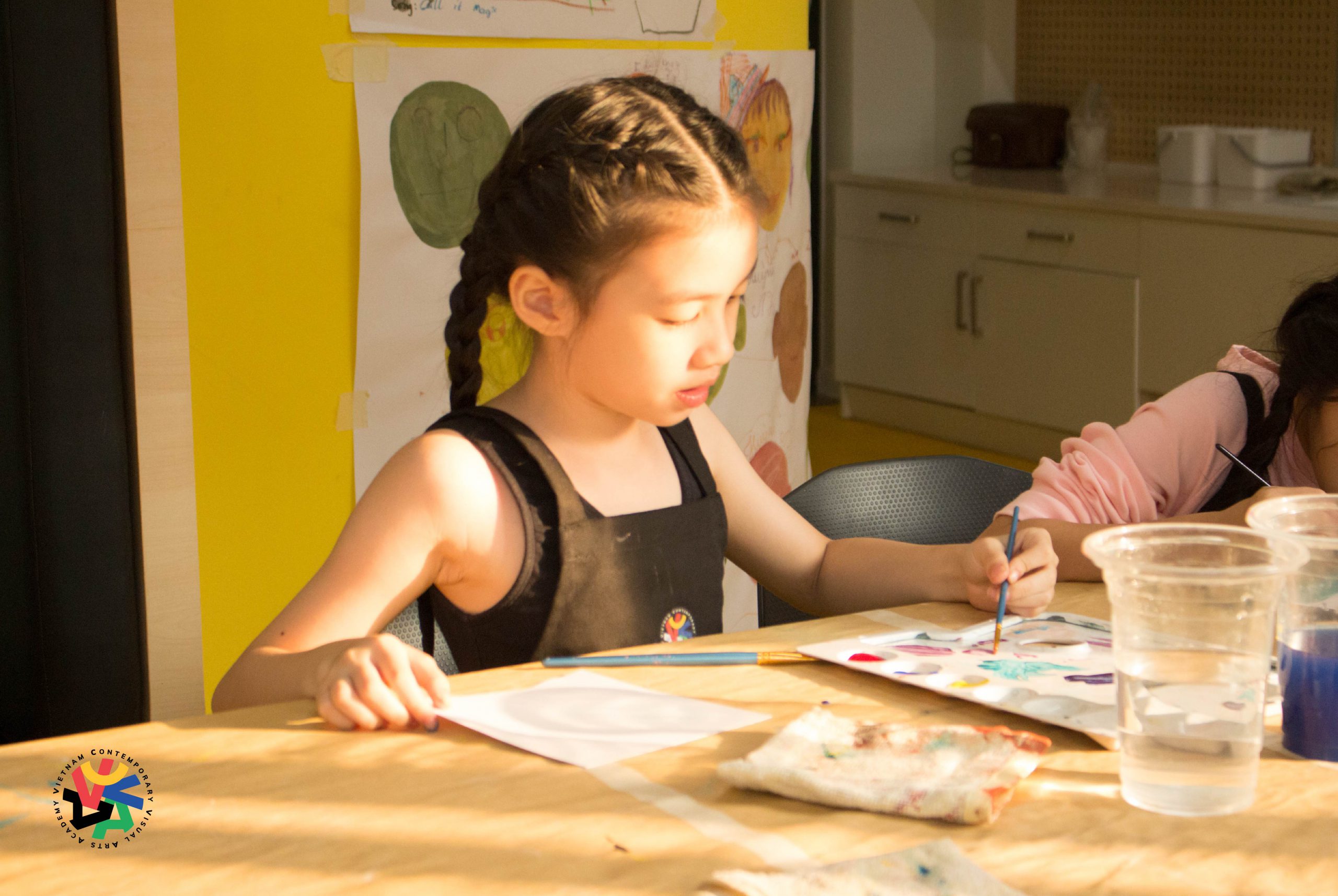
Anderson added that he referred to two different types of conversations about art. One is “mostly to guide students to further develop their art,” and the other type involves discussing art forms and symbolic meanings in the evaluation of art. When students learn through research and receive guidance in art, they grasp both the expression and form of artworks and develop their own artistic expression. Enhancing students’ creativity by encouraging general creativity in art undermines the importance of each specific art discipline—art production, aesthetic evaluation, art criticism, and art history—each of which has its own content and body of knowledge. However, one art discipline should not be prioritized over another. They should be taught interchangeably so that students learn to create and understand art simultaneously.
Howard Gardner, the director of Harvard’s Project Zero, holds a similar view on the value and importance of art creation. He stated, “Art creation is central to learning about art, and … cognitive and reflective activities about artwork must be integrated into the student’s creation process.” Gardner sees schools as places that should help children develop their minds holistically, and he believes that “artistic thinking—thinking in artistic symbols—is a unique way to optimize the mind.” He argues that all art disciplines represent distinct cognitive skills, and “if we eliminate those areas from the curriculum, we are effectively compromising the holistic development of children’s minds.” He maintains that art creation should remain central in teaching art to young children: “We believe that learning art should develop from children doing things: not just imitating, but actually drawing, dancing, performing, singing on their own.” Creation is “central to our approach—and it is very different from merely learning about past traditions or just talking about art.” He emphasizes that “creation should be linked with the nature of perception and reflection. Perception means learning to see more clearly, hear more distinctly, differentiate more finely, and see connections between things. Reflection means that students can step back and become aware of their own creative process …” He suggests using questioning strategies to encourage students to ask “what, why, and how to do this.”
As Gardner stated, “Art creation should be the focus of the art program because it provides a ‘unique way to optimize the mind.'” Perception and reflection in both art creation and evaluation must be intertwined in art lessons to give children the opportunity to fully develop their artistic potential.
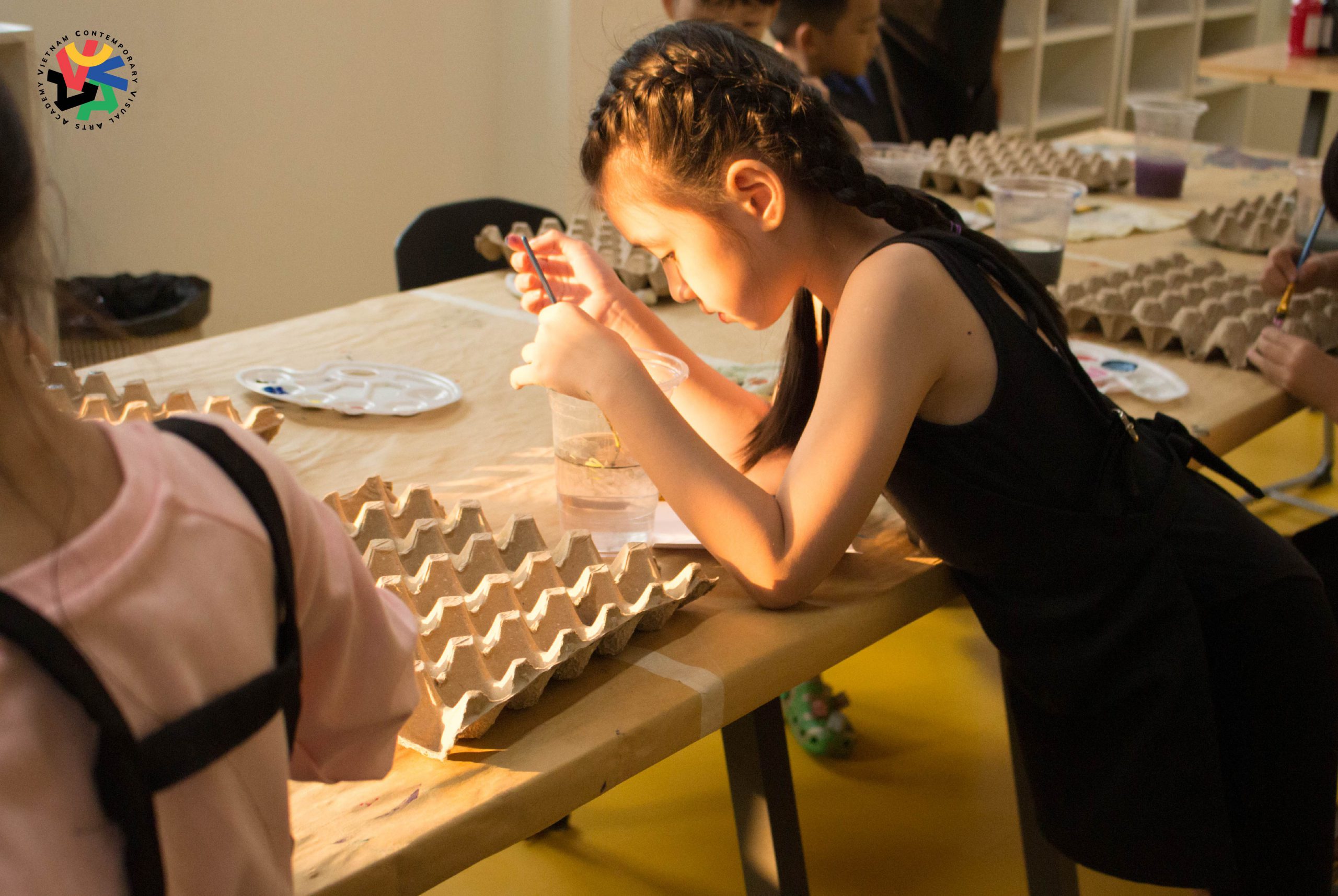
The cognitive development theories of Jean Piaget have had a lasting impact on our understanding of child development. His studies addressed cognition (how we take in information) and perspective (how we form ideas, use symbols, and understand abstract relationships), revealing that a child’s cognitive development occurs in stages. Art educators, most notably Viktor Lowenfeld, have identified and described the process of children’s art creation in naturally occurring stages of intellectual development that begin around the age of two.
To effectively teach art to elementary school children, teachers need to understand how children develop in their art-making process. We have all seen the marks made by one- to two-year-olds. Author Desmond Morris says that the child is fascinated by the fact that something flows out of the pencil. “It is a surprising reward connected to the child’s arm movement. The child will repeat the experiment until they tire of the activity or until the surface they are drawing on is covered.
Around the age of three, children start to clarify their symbols and begin creating distinct shapes. Lines close themselves off and become the outlines of some form. The experiments with crayons and pencils continue, and circles, squares, triangles, and crosses are made randomly or purposefully as they can repeat any shape. At this stage, the child engages in the art process from pure intuition and kinetic energy, and without any help or guidance, often produces beautiful works.
As Morris noted, the next stage of exploring symbols and shapes occurs when “a few lines or dots are placed inside a circle and then, as if by magic, a face stares back at the young artist.” Once they recognize the symbol for a face, children will try to enrich it by adding details like eyes, ears, hair, arms, and legs. Soon after, the child will create other images such as the sun, flowers, houses, etc. These initial symbols gradually become more detailed until “the replicas are accurately represented as they appear in the outside world on paper.”
At the ages of six to eight, children become less exploratory in their art, focusing more on conveying significant ideas and feelings. At this time, children use marks and geometric shapes to form the symbols they want. By the age of eight or nine, symbols give way to more realistic representations of images, objects, and spaces as children develop a more accurate view of how things actually look.
Let’s take a closer look at each stage in the child’s artistic development process.
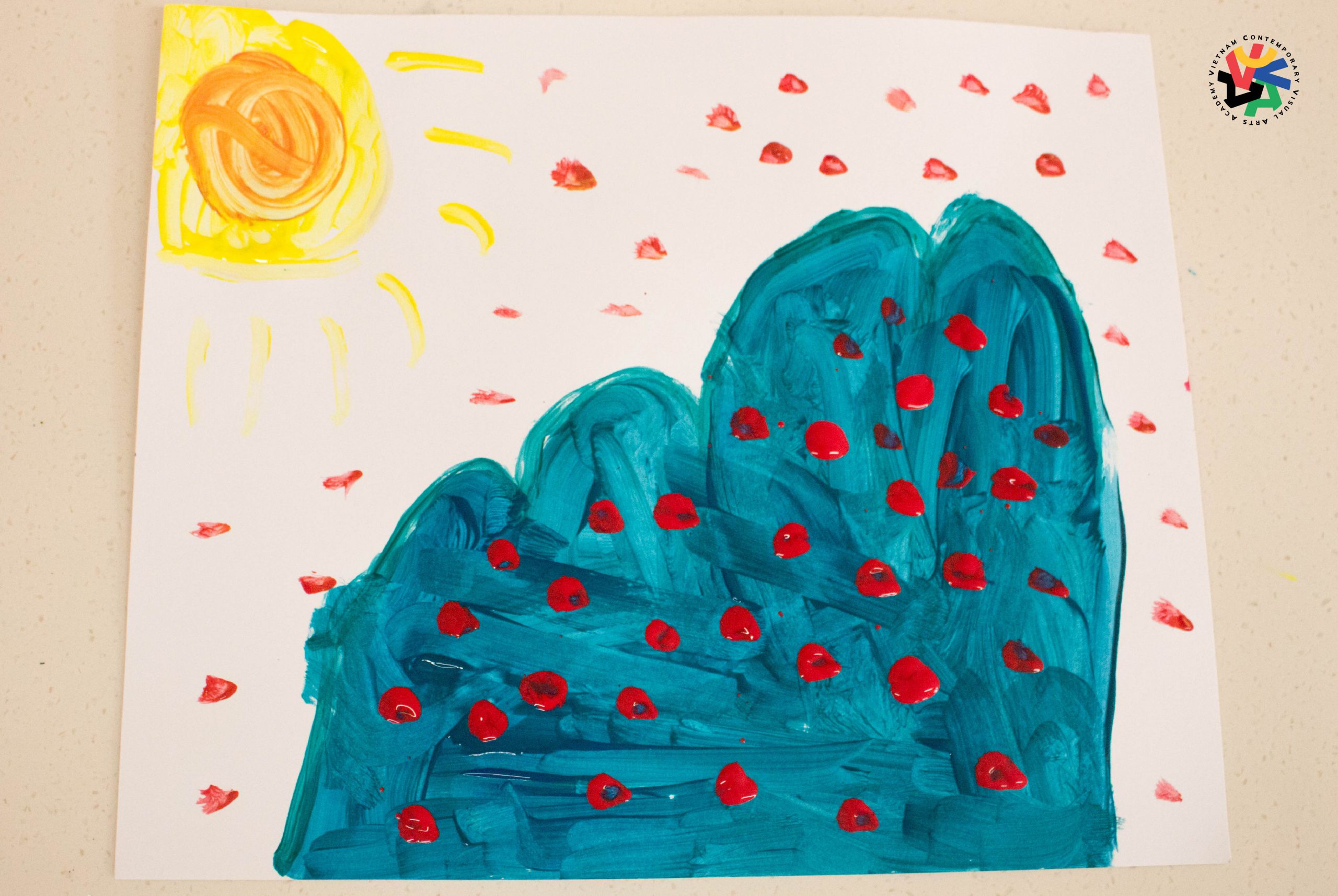
The earliest signs of a toddler’s development are often referred to as “scribbling.” Common dictionaries tend to define scribbling as meaningless marks and lines, giving the term a negative connotation and undermining the importance of this activity for a child’s development: “Lori is just scribbling.” This stage is a highly active period when children enjoy moving and arranging, cutting, and crafting with art materials. During this stage of development, children are not attempting to create realistic images. They start by making marks on tables, walls, or paper, using any available tools such as crayons, pencils, chalk, or pens.
Children delight in discovering how to make lines on any surface. Given the opportunity to practice, children will develop better control over the direction of the lines and the types of shapes they are creating.
Generally, children make lines and marks between the ages of two and four, although some may start earlier and others later. Initially, children make these marks in an uncontrolled manner. Before long, they will gain enough control to create straight or curved lines whenever they wish. After working in a controlled manner for some time, they will begin to tell stories about their marks.
When children name their marks, they are retaining images and thinking about specific objects and events during the drawing process. If a child’s visual attention is directed towards observing detailed aspects of their environment, they will become more perceptive and aware. They need to touch, smell, taste, and hear, as well as see, objects and things in their real world. According to Kamii and Radin:
“Only after sensory-motor experiences with real objects can children reproduce actions without objects present. Children need to personalize sensory-motor perceptions through art creation so they can form their own images before they can relate and build their own world of visual symbols.”
In summary, the artistic development of children in their early years comprises four recognizable stages:
Each child will develop at their own pace. Some children develop more slowly both physically and mentally. Others may have had many opportunities to create art and have been encouraged to produce their own artistic works. Such children will easily demonstrate their abilities in creating more complex artworks and in narrating their own art pieces
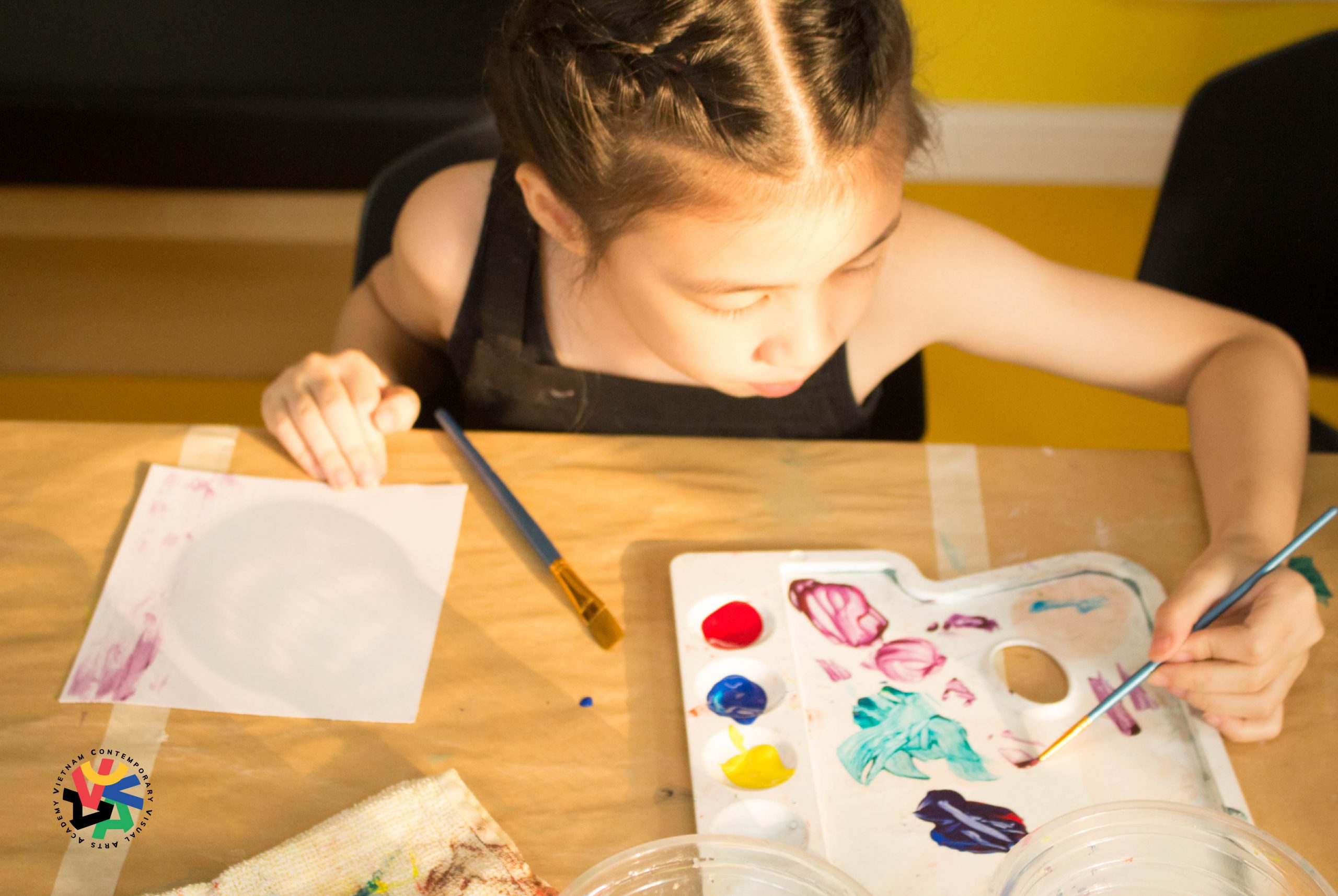
For children aged four to eight, naming symbols evolves into creating simple, recognizable images, often very identifiable symbols such as heads and legs. Creating a recognizable symbol with a specific meaning is an intentional and controlled action. Symbols are created to convey the events, people, or objects that have impressed the child at a particular time. Children develop various symbols for objects in their environment, such as dogs, houses, flowers, and toys, but they most frequently draw people. A child’s first images often include themselves, their parents, siblings, and friends. These initial images are usually unrelated to other images within the same drawing. Children typically draw each symbol individually and then begin to relate the images within a single drawing. This action often requires a baseline or ground line to place the various objects and figures on.
Children have a certain logic in how they depict and relate their symbols. The first symbols of figures might look similar, except the child might use different colors to represent different individuals. The most important images are usually larger than others. The baseline with objects placed on it represents the child’s early attempts to depict space. The sky at the top of the page, grass or ground at the bottom, and air in between. As children grow and enhance their spatial concepts, they address spatial problems in various ways, including creating curved baselines, elevated baselines, X-ray views (see-through), and complex planar and elevation drawings. These visual space interpretations are based on what the child knows, rather than what the child sees. Color Plates 1, 2, 3, 9, and 10 in the Color Library are examples of children’s art from the symbol-making stage.
At the beginning of the symbol-making stage, colors are not yet related to specific objects. Later in this stage, the first color relationships are established, typically blue for the sky, yellow for the sun, and green or brown for grass or the ground. By the end of the symbol-making stage, visual realism starts to dominate, and children begin to draw more of what they see, rather than what they know. The geometric lines they used to make symbols gradually give way to more realistic lines to describe their concept of the actual object they are drawing. For example, children no longer depict an eye as a circle with a dot. Instead, they will attempt to draw the eye as they see it. A flat, green line no longer represents grass; clouds are no longer white on a blue sky; objects in the distance are now highest and largest on the page. At this crucial point, children begin to become aware of how things look in the real world and sense the difference between what they see and the representative symbols they have been using. At this time, the stage of realism begins.
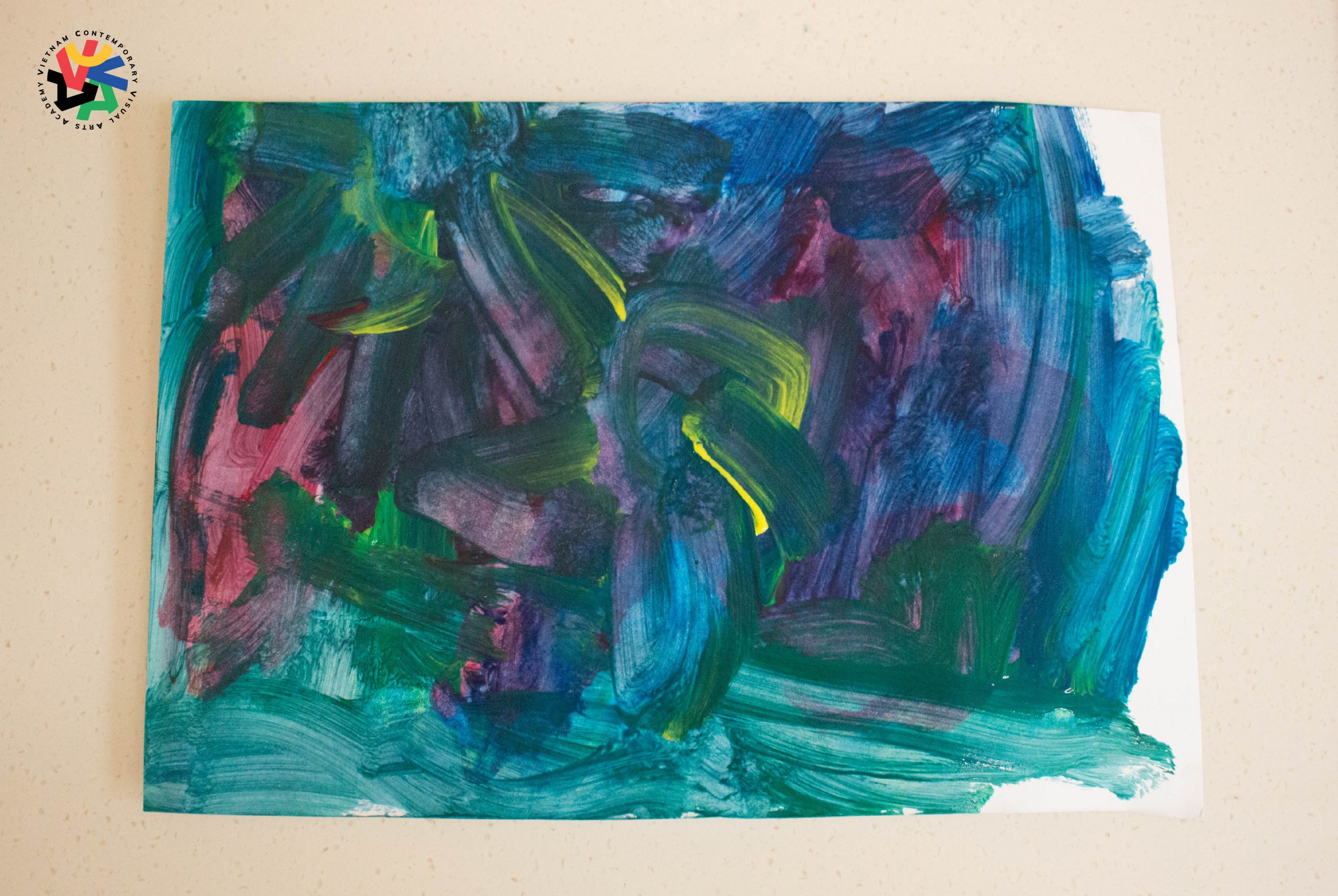
The realism stage is often considered the final phase for drawings composed of symbols. Starting around eight or nine years old, children adopt a new, realistic approach to creating their drawings. While they may still retain the joy of childhood imagination, their thoughts about what they see and how they create art change significantly. Geometric symbols are no longer captivating enough for their artistic endeavors. Children begin to depict in their drawings how they perceive the sky meeting the horizon and objects overlapping, creating new spatial effects.
Children in the realism stage aim to draw more realistic figures with a higher sense of proportion and less exaggerated body parts. They pay attention to the hair and clothing of the characters they draw and also depict the actions of the characters. Colors on objects and people are represented more accurately. Children may become more adept at shading objects, drawing shadows, and making distant objects smaller with fewer details. They start to develop an awareness of space and perspective visually. The figures are drawn smaller in relation to the size of the paper, with objects often overlapping and extending off the page.
In the realism stage, as in other levels, a single artwork can simultaneously exhibit different stages. Most children at this age need to closely observe the objects they want to draw. They can acquire the visual information they need not only from real objects, models, and landscapes but also from photographs. Studying artworks can help children understand how artists perceive and express moods, subjects, and themes, and how they use space, shapes, and color variations to create their artworks. If children at this age want to continue drawing their art, they need to learn realistic drawing skills, or they may stop drawing altogether.
Color plates 4, 5, 6, 7, and 8 in the Color Library are examples of children’s art from the realism stage.
In Japan, during the drafting of the national curriculum, different stages of children’s artistic development are carefully considered to meet their developmental needs. One hundred minutes per week are allocated to art activities. Each child has an art textbook because Japan has a centuries-old tradition of using art textbooks for a standardized, nationally applied curriculum. The textbooks are completely changed every ten years and revised in the third year. They introduce three types of activities for art education: Drawing or Shaping Activities, Creating and Building Image Activities, and Making Functional Objects. Textbooks from third to sixth grade include historical knowledge of world art, while first and second-grade books include additional categories like Playing Together and Making Friends.
In first grade, Japanese children draw objects in predetermined action poses. In second grade, they draw full-figure images. In the following grades, they continue to draw figures, along with animals, flowers, and landscapes. By sixth grade, they can draw objects with full functionality and related group images. Throughout sixth grade, each student completes a large woodblock print self-portrait.
The sequence of content in the textbooks shows that skills learned in lower grades are prerequisites for skills introduced in higher grades. According to Mary Sue Foster, Japan believes that “effort equals success.” This contrasts with the American view that “success is determined by ability.” Foster notes that the Japanese emphasize that “intuitive understanding, inspiration, and insight into what is happening are essential. Values such as hard work, perseverance, choosing difficult tasks, wholehearted dedication, and cooperation are highly regarded.”

Connect:

© 2022 Vietnam Contemporary Visual Arts Academy. All Rights Reserved